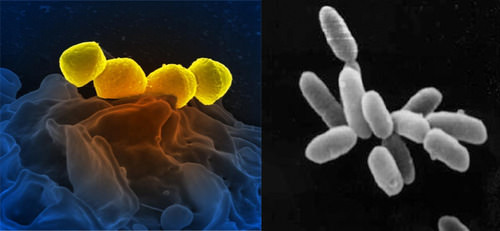1.10: Domain
- Page ID
- 12165
\( \newcommand{\vecs}[1]{\overset { \scriptstyle \rightharpoonup} {\mathbf{#1}} } \)
\( \newcommand{\vecd}[1]{\overset{-\!-\!\rightharpoonup}{\vphantom{a}\smash {#1}}} \)
\( \newcommand{\id}{\mathrm{id}}\) \( \newcommand{\Span}{\mathrm{span}}\)
( \newcommand{\kernel}{\mathrm{null}\,}\) \( \newcommand{\range}{\mathrm{range}\,}\)
\( \newcommand{\RealPart}{\mathrm{Re}}\) \( \newcommand{\ImaginaryPart}{\mathrm{Im}}\)
\( \newcommand{\Argument}{\mathrm{Arg}}\) \( \newcommand{\norm}[1]{\| #1 \|}\)
\( \newcommand{\inner}[2]{\langle #1, #2 \rangle}\)
\( \newcommand{\Span}{\mathrm{span}}\)
\( \newcommand{\id}{\mathrm{id}}\)
\( \newcommand{\Span}{\mathrm{span}}\)
\( \newcommand{\kernel}{\mathrm{null}\,}\)
\( \newcommand{\range}{\mathrm{range}\,}\)
\( \newcommand{\RealPart}{\mathrm{Re}}\)
\( \newcommand{\ImaginaryPart}{\mathrm{Im}}\)
\( \newcommand{\Argument}{\mathrm{Arg}}\)
\( \newcommand{\norm}[1]{\| #1 \|}\)
\( \newcommand{\inner}[2]{\langle #1, #2 \rangle}\)
\( \newcommand{\Span}{\mathrm{span}}\) \( \newcommand{\AA}{\unicode[.8,0]{x212B}}\)
\( \newcommand{\vectorA}[1]{\vec{#1}} % arrow\)
\( \newcommand{\vectorAt}[1]{\vec{\text{#1}}} % arrow\)
\( \newcommand{\vectorB}[1]{\overset { \scriptstyle \rightharpoonup} {\mathbf{#1}} } \)
\( \newcommand{\vectorC}[1]{\textbf{#1}} \)
\( \newcommand{\vectorD}[1]{\overrightarrow{#1}} \)
\( \newcommand{\vectorDt}[1]{\overrightarrow{\text{#1}}} \)
\( \newcommand{\vectE}[1]{\overset{-\!-\!\rightharpoonup}{\vphantom{a}\smash{\mathbf {#1}}}} \)
\( \newcommand{\vecs}[1]{\overset { \scriptstyle \rightharpoonup} {\mathbf{#1}} } \)
\( \newcommand{\vecd}[1]{\overset{-\!-\!\rightharpoonup}{\vphantom{a}\smash {#1}}} \)
\(\newcommand{\avec}{\mathbf a}\) \(\newcommand{\bvec}{\mathbf b}\) \(\newcommand{\cvec}{\mathbf c}\) \(\newcommand{\dvec}{\mathbf d}\) \(\newcommand{\dtil}{\widetilde{\mathbf d}}\) \(\newcommand{\evec}{\mathbf e}\) \(\newcommand{\fvec}{\mathbf f}\) \(\newcommand{\nvec}{\mathbf n}\) \(\newcommand{\pvec}{\mathbf p}\) \(\newcommand{\qvec}{\mathbf q}\) \(\newcommand{\svec}{\mathbf s}\) \(\newcommand{\tvec}{\mathbf t}\) \(\newcommand{\uvec}{\mathbf u}\) \(\newcommand{\vvec}{\mathbf v}\) \(\newcommand{\wvec}{\mathbf w}\) \(\newcommand{\xvec}{\mathbf x}\) \(\newcommand{\yvec}{\mathbf y}\) \(\newcommand{\zvec}{\mathbf z}\) \(\newcommand{\rvec}{\mathbf r}\) \(\newcommand{\mvec}{\mathbf m}\) \(\newcommand{\zerovec}{\mathbf 0}\) \(\newcommand{\onevec}{\mathbf 1}\) \(\newcommand{\real}{\mathbb R}\) \(\newcommand{\twovec}[2]{\left[\begin{array}{r}#1 \\ #2 \end{array}\right]}\) \(\newcommand{\ctwovec}[2]{\left[\begin{array}{c}#1 \\ #2 \end{array}\right]}\) \(\newcommand{\threevec}[3]{\left[\begin{array}{r}#1 \\ #2 \\ #3 \end{array}\right]}\) \(\newcommand{\cthreevec}[3]{\left[\begin{array}{c}#1 \\ #2 \\ #3 \end{array}\right]}\) \(\newcommand{\fourvec}[4]{\left[\begin{array}{r}#1 \\ #2 \\ #3 \\ #4 \end{array}\right]}\) \(\newcommand{\cfourvec}[4]{\left[\begin{array}{c}#1 \\ #2 \\ #3 \\ #4 \end{array}\right]}\) \(\newcommand{\fivevec}[5]{\left[\begin{array}{r}#1 \\ #2 \\ #3 \\ #4 \\ #5 \\ \end{array}\right]}\) \(\newcommand{\cfivevec}[5]{\left[\begin{array}{c}#1 \\ #2 \\ #3 \\ #4 \\ #5 \\ \end{array}\right]}\) \(\newcommand{\mattwo}[4]{\left[\begin{array}{rr}#1 \amp #2 \\ #3 \amp #4 \\ \end{array}\right]}\) \(\newcommand{\laspan}[1]{\text{Span}\{#1\}}\) \(\newcommand{\bcal}{\cal B}\) \(\newcommand{\ccal}{\cal C}\) \(\newcommand{\scal}{\cal S}\) \(\newcommand{\wcal}{\cal W}\) \(\newcommand{\ecal}{\cal E}\) \(\newcommand{\coords}[2]{\left\{#1\right\}_{#2}}\) \(\newcommand{\gray}[1]{\color{gray}{#1}}\) \(\newcommand{\lgray}[1]{\color{lightgray}{#1}}\) \(\newcommand{\rank}{\operatorname{rank}}\) \(\newcommand{\row}{\text{Row}}\) \(\newcommand{\col}{\text{Col}}\) \(\renewcommand{\row}{\text{Row}}\) \(\newcommand{\nul}{\text{Nul}}\) \(\newcommand{\var}{\text{Var}}\) \(\newcommand{\corr}{\text{corr}}\) \(\newcommand{\len}[1]{\left|#1\right|}\) \(\newcommand{\bbar}{\overline{\bvec}}\) \(\newcommand{\bhat}{\widehat{\bvec}}\) \(\newcommand{\bperp}{\bvec^\perp}\) \(\newcommand{\xhat}{\widehat{\xvec}}\) \(\newcommand{\vhat}{\widehat{\vvec}}\) \(\newcommand{\uhat}{\widehat{\uvec}}\) \(\newcommand{\what}{\widehat{\wvec}}\) \(\newcommand{\Sighat}{\widehat{\Sigma}}\) \(\newcommand{\lt}{<}\) \(\newcommand{\gt}{>}\) \(\newcommand{\amp}{&}\) \(\definecolor{fillinmathshade}{gray}{0.9}\)
What do you have in common with pond scum?
Humans are in the same domain as trees and algae, which makes up the "pond scum" you see here. What could they possibly have in common? It is the location of their DNA inside their cells. Their cells all have a nucleus that is home to their genetic material.
The Domains of Life
Let’s explore the domain, the least specific category of classification.
All of life can be divided into three domains, based on the type of cell of the organism:
- Bacteria: cells do not contain a nucleus.
- Archaea: cells do not contain a nucleus; they have a different cell wall from bacteria.
- Eukarya: cells do contain a nucleus.
Archaea and Bacteria
The Archaea and Bacteria domains (Figure below) are both entirely composed of small, single-celled organisms and seem very similar, but they also have significant differences. Both are composed of prokaryotic cells, which are cells without a nucleus. In addition, both domains are composed of species that reproduce asexually (asexual reproduction) by dividing in two. Both domains also have species with cells surrounded by a cell wall, however, the cell walls are made of different materials. Bacterial cell walls contain the polysaccharide peptidoglycan. Lastly, Archaea often live in extreme environments including hot springs, geysers, and salt flats. Bacteria do not live in these environments.

Eukarya
All of the cells in the domain Eukarya keep their genetic material, or DNA, inside the nucleus. The domain Eukarya is made up of four kingdoms:
- Plantae: Plants, such as trees and grasses, survive by capturing energy from the sun, a process called photosynthesis.
- Fungi: Fungi, such as mushrooms and molds, survive by "eating" other organisms or the remains of other organisms. These organisms absorb their nutrients from other organisms.
- Animalia: Animals also survive by eating other organisms or the remains of other organisms. Animals range from tiny ants to the largest whales, and include arthropods, fish, amphibians, reptiles, and mammals (Figure below).
- Protista: Protists are not all descended from a single common ancestor in the way that plants, animals, and fungi are. Protists are all the eukaryotic organisms that do not fit into one of the other three kingdoms. They include many kinds of microscopic one-celled (unicellular) organisms, such as algae and plankton, but also giant seaweeds that can grow to be 200 feet long.

Plants, animals, fungi, and protists might seem very different, but remember that if you look through a microscope, you will find similar cells with a membrane-bound nucleus in all of them. These are eukaryotic cells. These cells also have membrane-bound organelles, which prokaryotic cells lack. The main characteristics of the three domains of life are summarized in Table below.
| Archaea | Bacteria | Eukarya | |
|---|---|---|---|
| Multicelluar | No | No | Yes |
| Cell wall | Yes, without peptidoglycan | Yes, with peptidoglycan | Varies. Plants and fungi have a cell wall; animals do not. |
| Nucleus (Membrane-Enclosed DNA) | No | No | Yes |
| Membrane-Bound Organelles | No | No | Yes |
Summary
- All life can be classified into three domains: Bacteria, Archaea, and Eukarya.
- Organisms in the domain Eukarya keep their genetic material in a nucleus and include the plants, animals, fungi, and protists.
Explore More
Use the resource below to answer the questions that follow.
- Exploring Deep-Subsurface: Life Domains at http://www.youtube.com/watch?v=UI7Yvu4McDU (8:02)
- What are the three domains of life?
- What category do the individual organisms that we can see with our naked eye fall into?
- What is an extremophile? What domain is known for these organisms? (Note: recent work has shown that extremophiles are not the only members of this domain.)
- How do Archaea and Bacteria differ? How are they the same?
- Which domain of life seems to be absent for deep-subsurface communities?
Review
- Compare and contrast the domains Archaea and Bacteria.
- What are the four kingdoms that make up the domain Eukarya?
- Name three different examples of organisms in the domain Eukarya.

